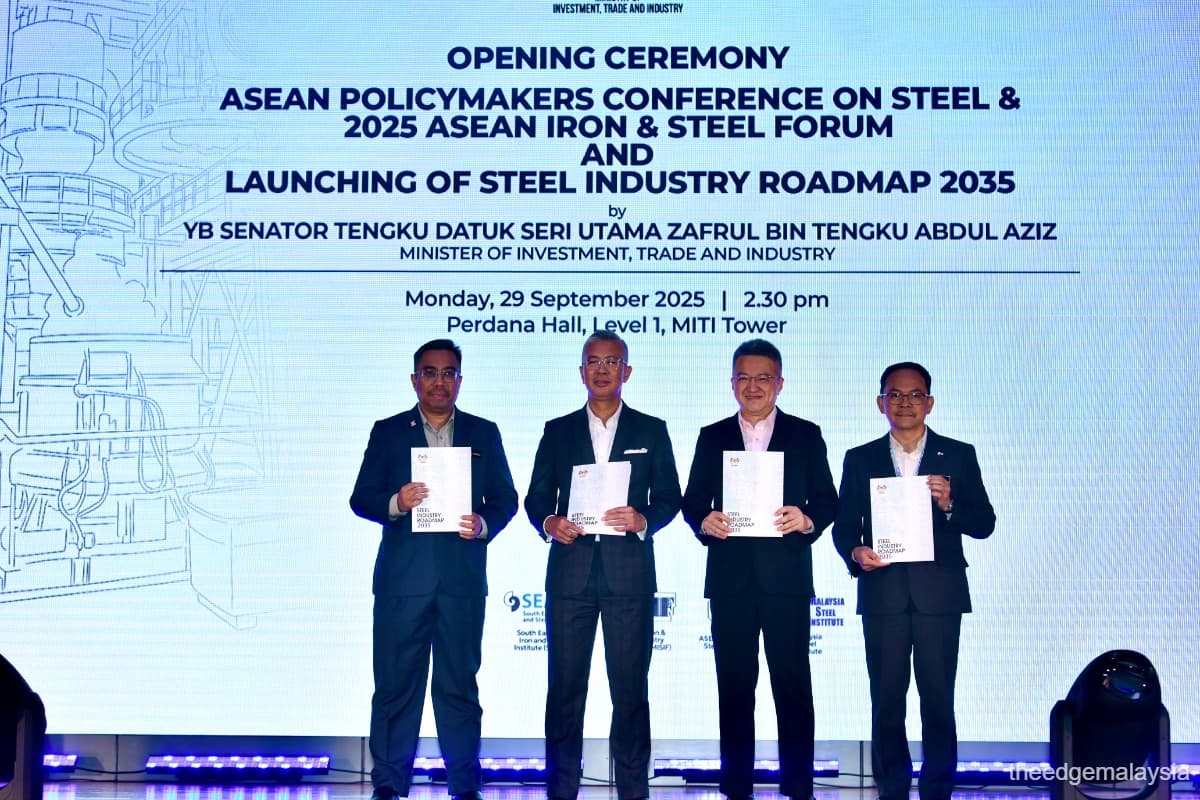
- Dormant licences will be revoked, and future approvals will be subject to stricter criteria, including market conditions, technology adoption, and alignment with low-carbon objectives.
KUALA LUMPUR (Sept 30): The Ministry of Investment, Trade and Industry (Miti) has unveiled sweeping licensing reforms to tackle upstream overcapacity in Malaysia’s steel sector. These reforms are a central pillar of its newly launched Steel Industry Roadmap 2035.
The roadmap introduces a comprehensive overhaul of manufacturing licences, to align industry growth with actual demand, technological shifts, and national decarbonisation goals. This aims to address deep-rooted structural imbalances, particularly in commodity-grade long steel products—such as rebar, wire rod, or merchant bars, the standardised, high-volume steel items primarily used in construction and basic industrial fabrication—where excess capacity has distorted market dynamics and weakened competitiveness.
Much of the surplus came from blast furnace-basic oxygen furnace (BF-BOF) facilities. While these facilities remain efficient at scale, they are also highly carbon-intensive, as they rely heavily on coal and generate the highest carbon dioxide emissions. Miti cautioned that if the 13.5 million tonnes of BF-BOF capacity already approved are fully built and operated, emissions would rival those of "more than five coal-fired power plants".
Renegotiate unbuilt approvals, revoke dormant licences
To mitigate these risks, Miti will renegotiate unbuilt approvals and redirect production towards flat steel, which offers higher demand and value-added potential, according to the roadmap.
Dormant licences will be revoked, and future approvals will be subject to stricter criteria, including market conditions, technology adoption, and alignment with low-carbon objectives. More importantly, new BF-BOF licences will be prohibited, effectively halting further expansion of high-emission upstream production.
Instead, the ministry will prioritise direct reduced iron and hot briquetted iron (DRI-HBI) facilities, which provide sustainable feedstock for electric arc furnaces (EAFs). These facilities produce metallic iron by reducing iron ore to a solid state using reducing gases, primarily natural gas or hydrogen, creating a high-purity product—the DRI—that is often compacted—into HBI—for safe handling and transport.
The DRI-HBI/EAF is seen as a newer, more environmentally friendly alternative to the BF-BOF route, particularly where cheap natural gas is available, and is a key technology for decarbonising the steel industry due to its ability to transition to hydrogen as a clean reducing agent.
The moratorium will remain in place for upstream and midstream long steel until utilisation rates reach 80%. Restrictions on flat steel expansion will also continue, though with flexibility for converting unused long steel licences into flat steel capacity.
Stagnant market
The reforms are being implemented against the backdrop of a stagnant market. The 10 million tonnes per annum Hebei Xin Wu’an steel plant—the largest announced steel project in Malaysia to date, located in the Samalaju Industrial Park, Bintulu, Sarawak—has stalled at the ground clearance stage, the report noted. Its China-based owner is reportedly seeking buyers for its licences, reflecting waning investor appetite.
Meanwhile, domestic demand remains subdued, driven largely by the construction sector’s reliance on lower-grade long products, while high-grade flat products continue to be sourced from abroad.
Projections show upstream capacity could reach 40.8 million tonnes by 2030, against total domestic demand of just 14.7 million tonnes. To prevent a repeat of past cycles, downstream growth in high-value-added steel—especially for sectors targeted under the New Industrial Master Plan 2030—will be encouraged under a capacity management framework.
The Steel Industry Roadmap 2035 combines licensing reform with targeted incentives to balance industrial expansion, environmental sustainability, and long-term resilience.
As Penang girds itself towards the last lap of its Penang2030 vision, check out how the residential segment is keeping pace in EdgeProp’s special report: PENANG Investing Towards 2030.






